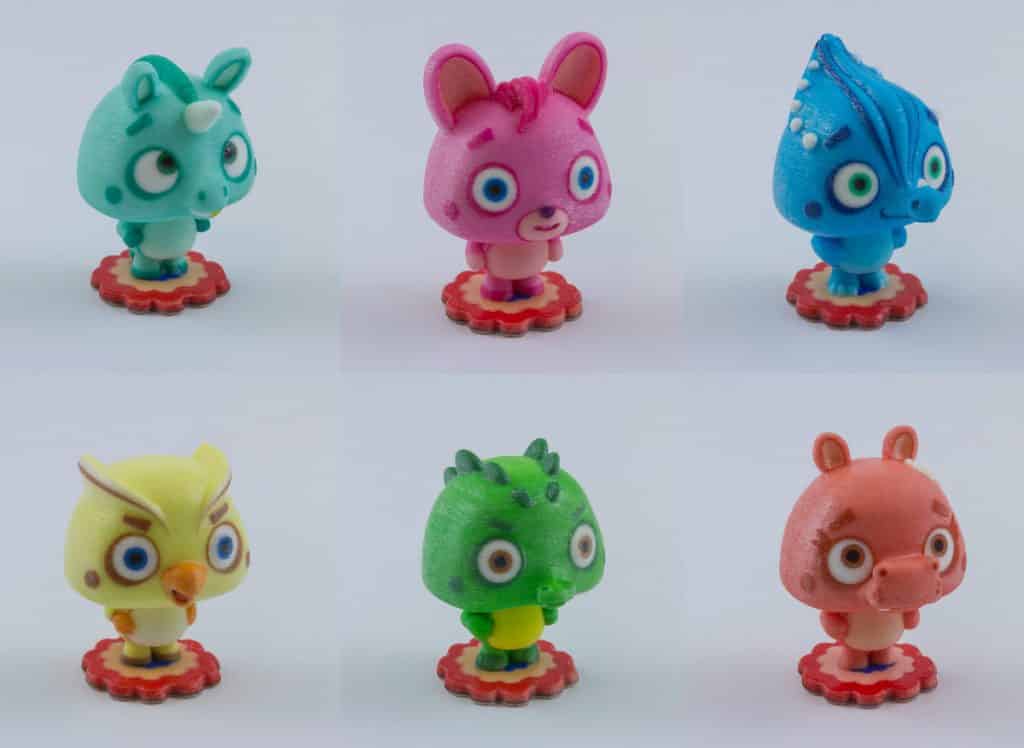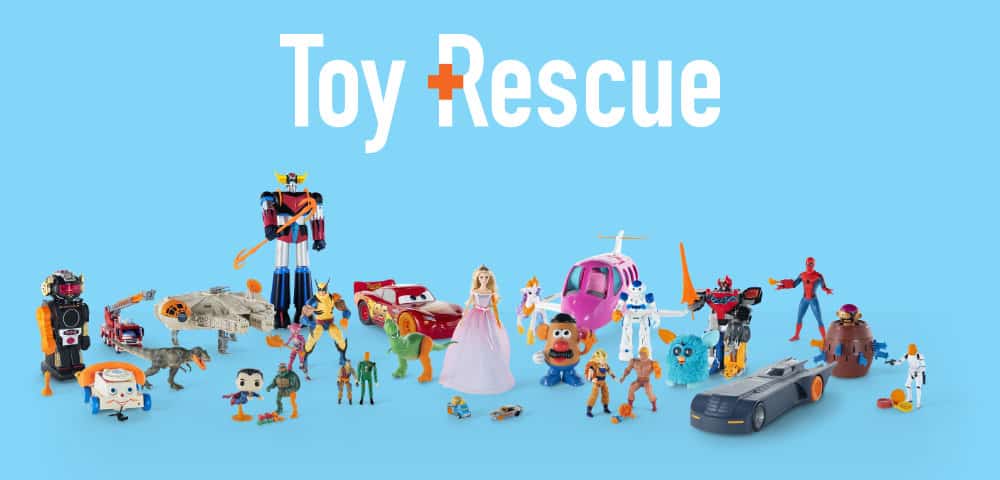We know that 3D printing is commonly used for gadgets, figurines, and other hobbies. But this technology can also be used for real toys. Indeed, 3D printing toys and 3D printing spare parts for toys might more interesting than you think on a business level. See all the advantages of additive manufacturing for toy manufacturers but also for new businesses manufacturing spare parts for these objects.
Everything is 3D printable, and so are toys. First, we will see how hobbyists started to use additive manufacturing to create toys and figurines, and then we will focus on the manufacturing of toys and on the use of this technology by companies.
3D printed figurines: Hobbyists making the most of 3D printing
Using 3D printing offers opportunities for hobbyists to create their own customized figurines quite easily. Desktop 3D printers using Fused Deposition Modeling (FDM) technology are used most of the time but thanks to the advanced technologies offered by online 3D printing services, it becomes even easier to create figurines thanks to this manufacturing technique.
These printing services are also a way to create high-quality sculptures and customized figurines. With technologies such as ColorJet and its Multicolor 3D printing material, manufacturing colored figurines has never been so easy! Our new material MJF Fullcolor Nylon is also excellent in making colorful toys. But 3D printing action figures and toys are not only interesting for hobbyists.
3D printing toys: Offering new business opportunities
Creating spare parts and rethinking the supply chain
As you may know, additive manufacturing is the best technique to manufacture spare parts. While using 3D printing, manufacturing spare parts become useful for many different aspects and are starting to be used in some interesting sectors. 3D printed spare parts can be used to repair broken parts that are no longer produced. The automotive sector is making the most of this technology, some big manufacturers are already using it such as Porsche or Jaguar for their classic cars: this is an opportunity for them to recreate theses old parts identically. This technique is also a great advantage for spare parts as it is adapted to the production of small volumes.
But the automotive industry is not the only sector to use 3D printing to create spare parts. Indeed, the home appliance manufacturer Whirlpool is also using additive manufacturing in order to digitize its part catalog, to fight against obsolescence!
For toys, the process can be exactly the same: 3D printing technology can be used to repair toys, create spare parts, or create customized toys. It is a way to recreate and repair old toys. Most of the time, these spare parts don’t exist, or they are not produced individually. Implementing this manufacturing technique is a way to change a whole supply chain, by avoiding storage but gaining the opportunity to print as many parts as you need when you actually need them. We see people launching their businesses to repair toys, but this is evolving and might go even further in the upcoming years. 3D printing is drawing a new business model for toy manufacturers that will necessarily have to implement 3D printers in their workflows, which would significantly improve customer experiences.
The Toy Rescue project
The French 3D printers, Dagoma, started an initiative called Toy Rescue, in order to reduce the number of toys that are throw away, using additive manufacturing. Among all these toys, a lot of them are not entirely defective, some just have broken parts or parts missing. The goal here is to use 3D in order to create a new wheel, a new leg, etc.
This project started by identifying what were the most broken or missing parts on toys during the last 40 years. Thanks to this research, digital STL files of these parts have been created, making it easy to 3D print. It is now that easy to get a new Spiderman’s arm or Mr. Potato’s ear! As all these toys are already made of plastic, it is easy to recreate them with 3D printing, using FDM with materials such as ABS or PLA, but also using the Selective Laser Sintering (SLS) 3D technology with Nylon-based materials. For extremely detailed parts, you can also consider resin technologies such as Polyjet or DLS. Just like Whirlpool and its digital catalog of spare parts, toy manufacturers could soon start to offer the possibility to get spare parts of their most famous toys and fragile parts. Some big names of the toy industries are already showing some interest in 3D printing. For example, the toys store Toys’R’Us partnered with PieceMaker Technologies, to install 3D printers in some stores and give their customers access to these 3D machines in order to create customized toys for kids.
3D printing toys: What about intellectual property?
3D printing and intellectual property is a big subject. To ensure that an existing object isn’t protected before you reproduce it, you must consider the source used to print the object: the 3D file. Using 3D printing to repair a toy also means printing the part of an existing toy, and you have to keep in mind that you don’t own the design of these parts.
If you want to print an existing object with 3D files you got from a scan the object is certainly protected, the company manufacturing the object holds the rights. 3D scanning an object constitutes a reproduction, it may constitute counterfeit reproduction if you 3D print it.
However, making a new 3D file of an object using 3D modeling software cannot be considered as a reproduction since it is done directly by the 3D software user.
Fortunately, the reproduction of a protected object is not enough to be considered a counterfeit. There are exceptions such as:
- Prior authorization from the right holder is needed in order to print their object and exploit it.
- Denaturing the object during printing (altering its form without respecting the form chosen by its author, for example) and not mentioning the name of the right holder(s) is forbidden if there’s no authorization.
If you are not the toy manufacturer and want to replicate parts, you can’t produce these parts without authorization. Be sure to read our ebook about 3D printing and intellectual property to get all the information you need about this. FacFox is not a law firm, this is not legal advice, keep in mind that each situation differs and you may consider taking some advice on your specific situation with your lawyer. If 3D manufacturing offers a lot of freedom there are still rules you have to keep in mind, because you don’t own the rights of these toys, or these spare parts.


